Popular smartphone gimbals to record stable photos and videos.
A smartphone gimbal helps you achieve those smooth and steady shots, just like what you see in Hollywood movies. It uses fancy technology with gyroscopes and accelerometers to counteract any shaky movements. So, say goodbye to those blurry and shaky videos!
But that's not all! These gimbals come with some pretty cool features. Some of them can track a subject, so you can focus on what's important in your smartphone photography and videography. Others can even do time-lapse videos or motion-lapse videos, adding that extra touch of creativity to your content.
When it comes to choosing the right camera phone gimbal, you want something that's easy to use and comfortable to hold. It should be lightweight and compact enough to fit in your pocket. And hey, if you're on a budget, there are some affordable options out there that still do a great job!
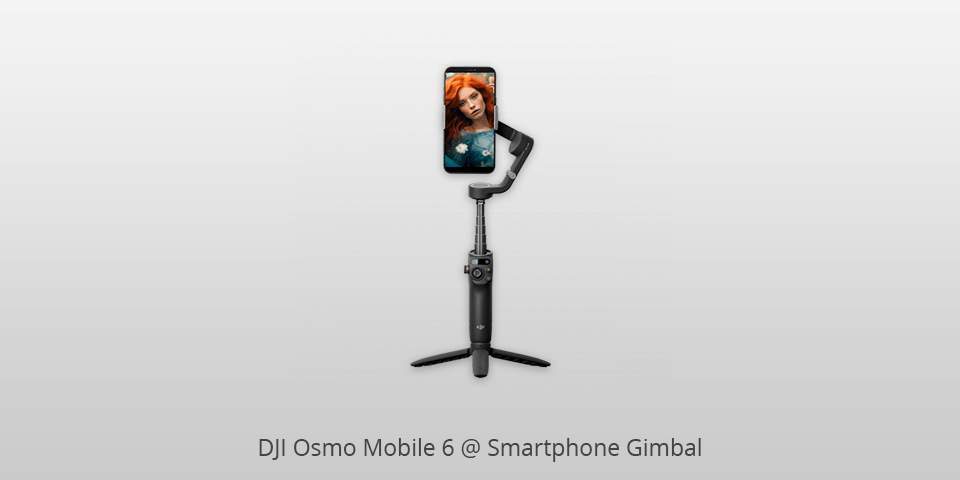
Dimensions: 10.87 x 3.9 x 4.37" | Weight: 1.01 pounds | Stabilization: 3-Axis | Max. Payload: 0.63 pounds
First of all, the stabilization on this smartphone and GoPro gimbal is top-notch. It offers 3-axis stabilization, which means that no matter how much you're moving or how bumpy the terrain is, your footage will come out smooth and professional-looking.
Whether you're hiking, traveling, or just capturing some impromptu moments, this gimbal will keep your subject centered and add a cinematic touch to your videos.
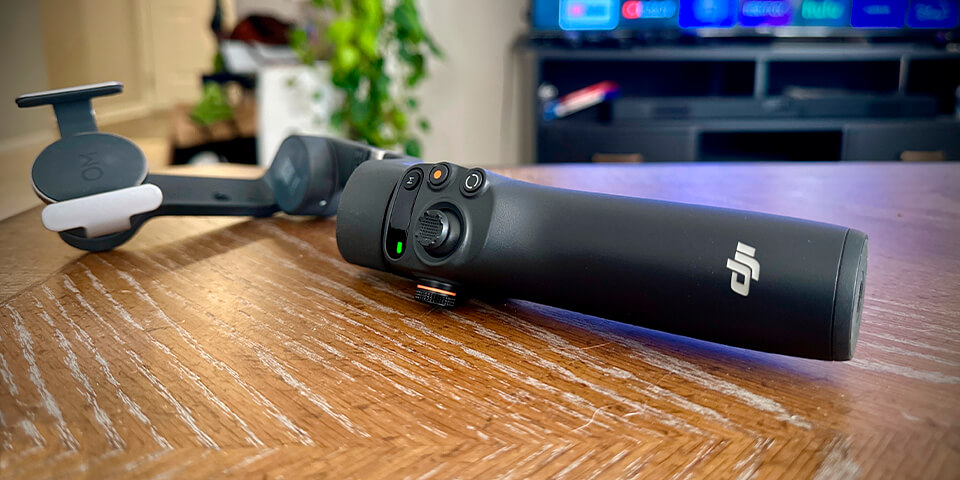
Another advantage of the Osmo Mobile 6 is its upgraded ActiveTrack 5.0 feature. This allows the gimbal to track subjects with greater accuracy, even if they are obstructed or moving quickly. It can even follow subjects that turn to the side or spin, and the zoom function adjusts seamlessly for continuous tracking.
Now, let's talk about some of the disadvantages. One thing I noticed is that the battery life could be better. It does last for a day of shooting, but I would have liked it to last a bit longer. However, this gimbal stabilizer for smartphone does charge quickly, so that's a plus.
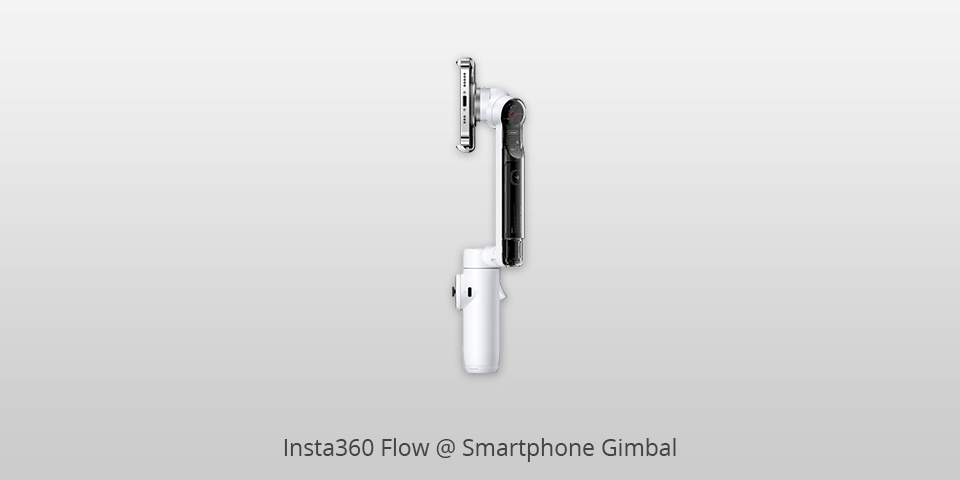
Dimensions: 7.5 x 4.5 x 4" | Weight: 1.6 pounds | Stabilization: 3-Axis | Max. Payload: 0.66 pounds
Insta360 Flow is designed with creators in mind, and it really shows. It elevates your content creation by providing smooth and shake-free shots. One of the standout features of the Flow is its advanced AI tracking. It uses person re-identification, which means it can follow your subject even if they move out of frame.
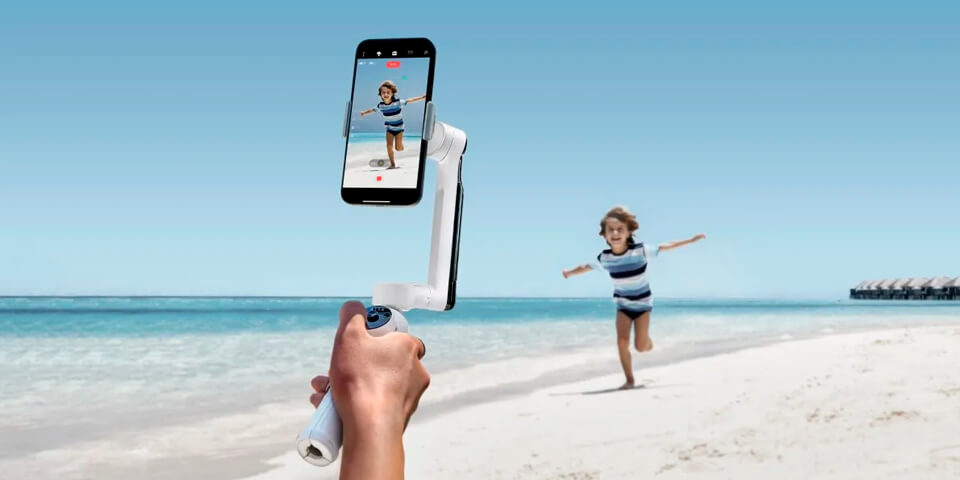
The Flow also offers a range of useful features. It has different follow modes that allow you to move the camera in specific directions while keeping your subject locked in frame. There's even a panoramic mode for capturing breathtaking landscape shots.
And if you're into selfies, the Flow comes with a dedicated selfie stick that allows you to get creative angles without needing another person.
Now, let's talk about some downsides. One limitation of the Flow is its limited downward tilt range. This means you can't tilt the gimbal too low before it starts to tilt up. This is due to its design, which is meant to accommodate ultrawide smartphones. It's a small inconvenience, but worth mentioning.
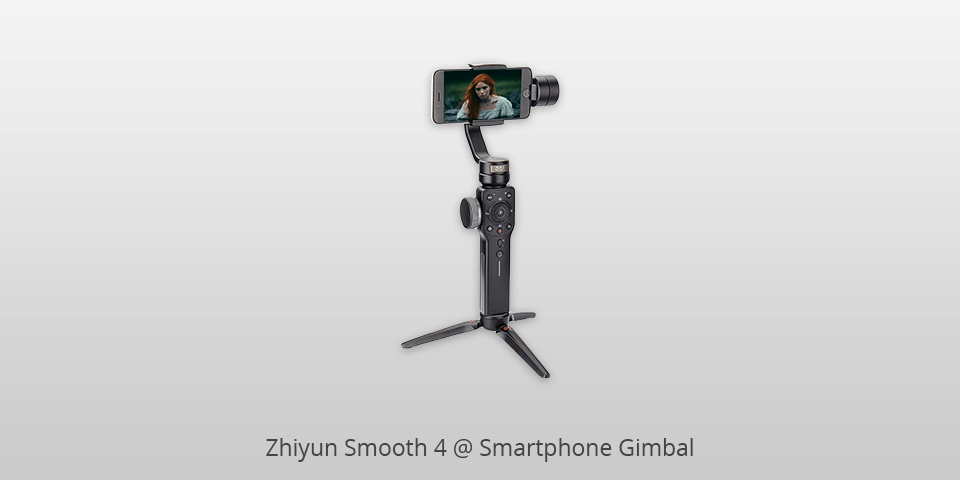
Dimensions: 11.6 x 4.13 x 12.91" | Weight: 1.1 pounds | Stabilization: 3-Axis | Max. Payload: 0.46 pounds
Zhiyun Smooth 4 is definitely one of the best cell phone gimbals out there when it comes to helping you create those smooth and professional-looking videos. It's lightweight and easy to use, which is a big plus.
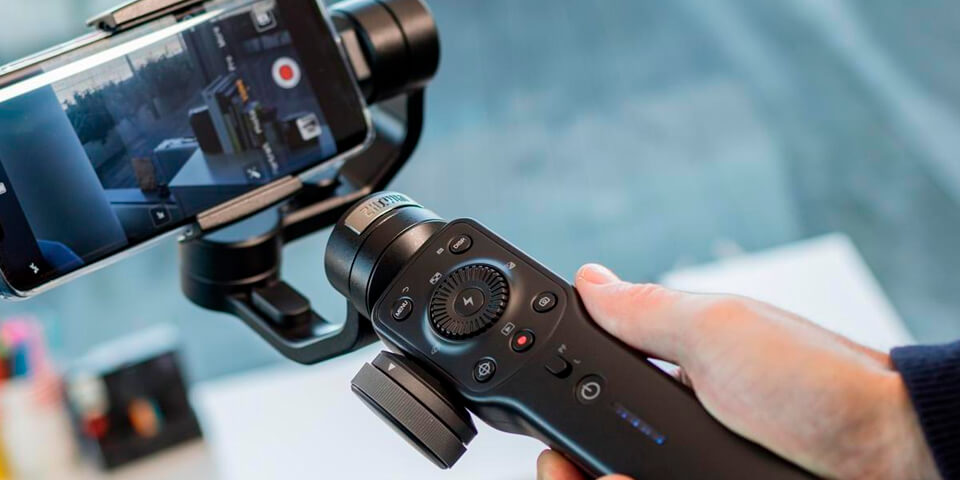
Now, let's talk about the cool features of this gimbal. One of my favorites is the intelligent object tracking. You can select a subject on the ZY Play app, and the gimbal will automatically follow it with the camera, keeping it centered on your screen. This is a major improvement over the older model, which would often lose focus.
Now, most of the functions of this gimbal are tied to the app, which can be a bit frustrating at times. Especially if you're an Android user, because let's face it, the app tends to crash quite often on those devices. So, that's something you need to keep in mind.
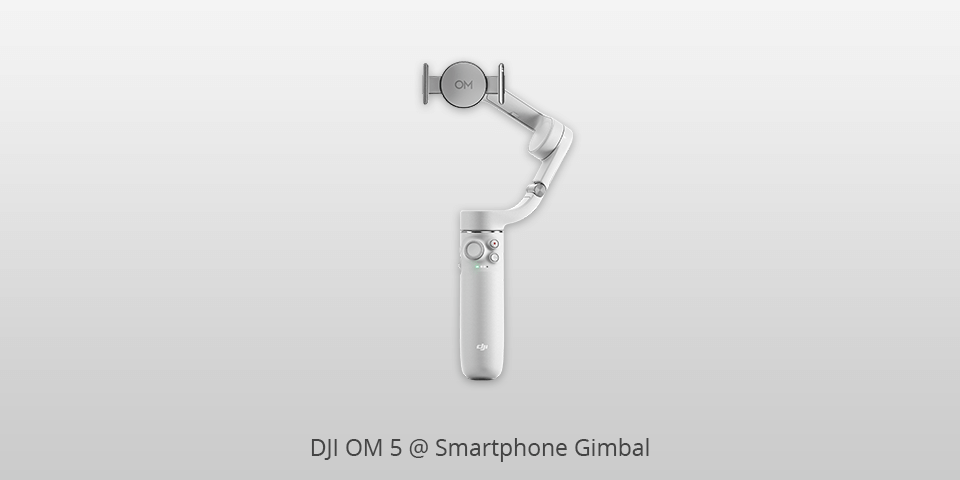
Dimensions: 10.41 x 4.37 x 3.63" | Weight: 0.63 pounds | Stabilization: 3-Axis | Max. Payload: 0.5 pounds
One thing that really impressed me about the OM 5 is the spring-loaded clamp for your smartphone. You simply attach your phone to the magnetic plate on the gimbal arm, and boom, you're ready to go. It's super quick and easy to set up, which is always a plus.
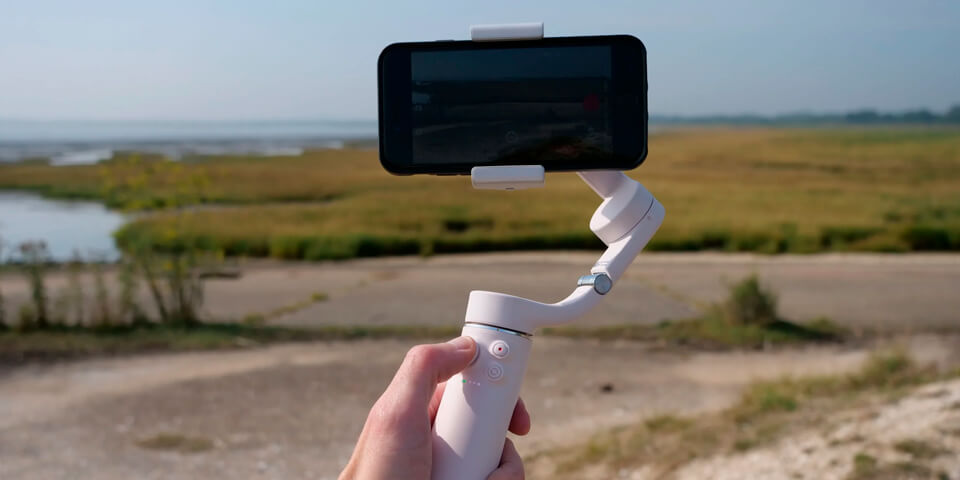
Now, let's talk about the shooting modes of this gimbal for phone. The OM 5 offers a range of special modes like DynamicZoom, Timelapse, Hyperlapse, and panorama photos. These modes really take your videos and selfies to the next level.
Now, let's address a few issues I encountered during my review. First off, the joystick can sometimes cause vibrations in the video. Luckily, you can adjust the joystick's speed setting in the DJI Mimo app to minimize this issue. I also experienced some Bluetooth connection dropouts, which can be a bit frustrating.
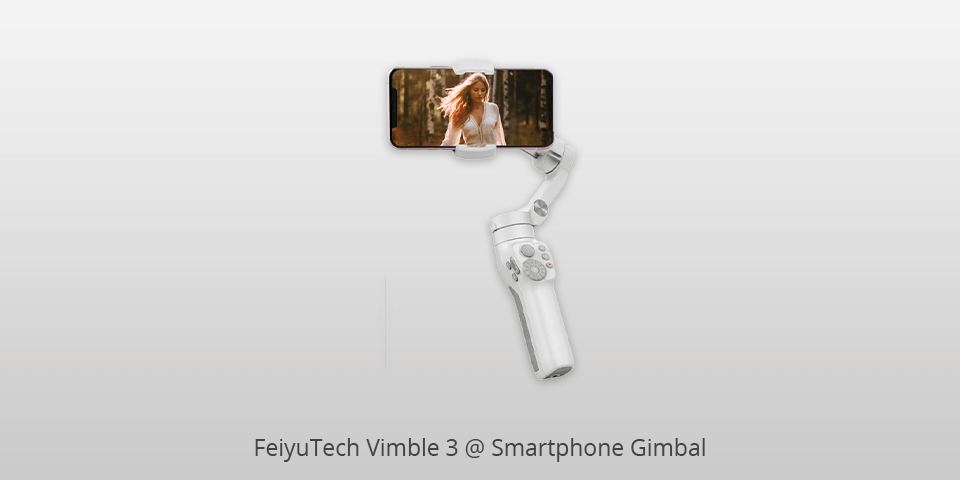
Dimensions: 2.5 x 6.9 x 4.5" | Weight: 0.85 pounds | Stabilization: 3-Axis | Max. Payload: 0.57 pounds
One of the standout features is its impressive image stabilization. For its price, it does an amazing job of ensuring your videos come out smooth and professional-looking. Plus, it's lightweight and compact, making it super easy to carry around in its handy storage bag or even slip into your pocket for on-the-go video recording.
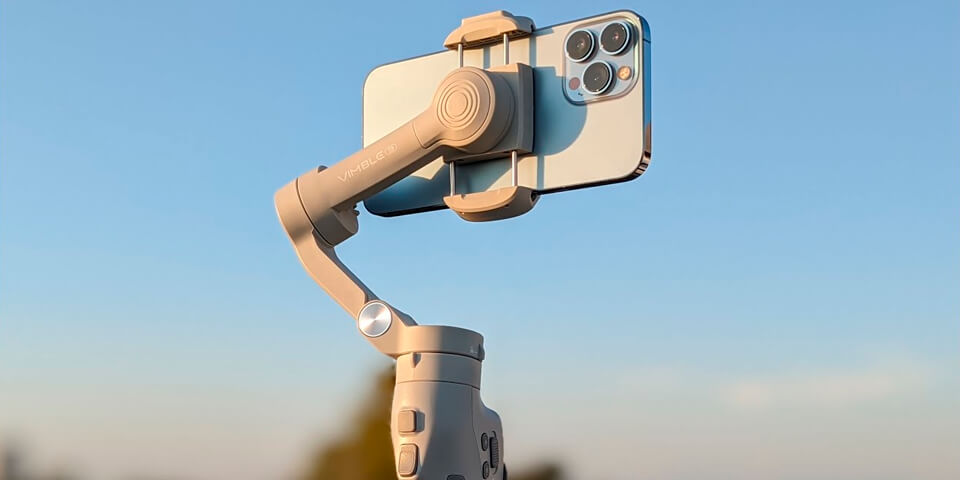
I also love that it comes with a mini tripod base and an extension rod, giving you even more versatility in capturing different angles and shots. And with the maximum load capacity of 0.57 pounds, it can handle most smartphones, including the latest iPhones, even with protective cases.
But I should note that the app requires a Bluetooth connection to operate, so make sure you have a stable connection for the best experience. Additionally, while the Vimble 3 is compatible with most smartphones, there may be some rare compatibility issues with certain models, so be sure to check before purchasing.
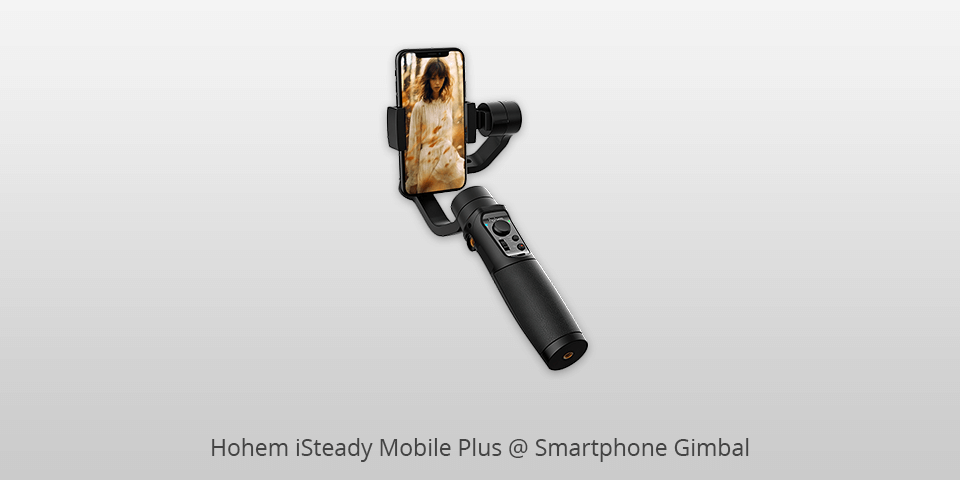
Dimensions: 13.3 x 5.8 x 2" | Weight: 1.09 pounds | Stabilization: 3-Axis | Max. Payload: 0.62 pounds
Let's start with the advantages of this cell phone gimbal. First off, its battery life is absolutely impressive, lasting up to 12 hours! This means you can film all day without worrying about running out of power.

Plus, the gimbal operates quietly, which is a huge bonus when you're trying to capture clean audio for your videos. The simple controls make it easy to adjust settings and switch between capturing photos and videos. And let's not forget about the foam-lined carrying case, which is perfect for keeping your gimbal safe while on the move.
However, like any product, the Hohem iSteady Mobile Plus does have its downsides. One issue is that balancing your phone on the gimbal can be a bit tricky, especially when switching between landscape and portrait mode. Additionally, the app interface can be a little confusing at first, with some functions hidden in menus that require exploration.
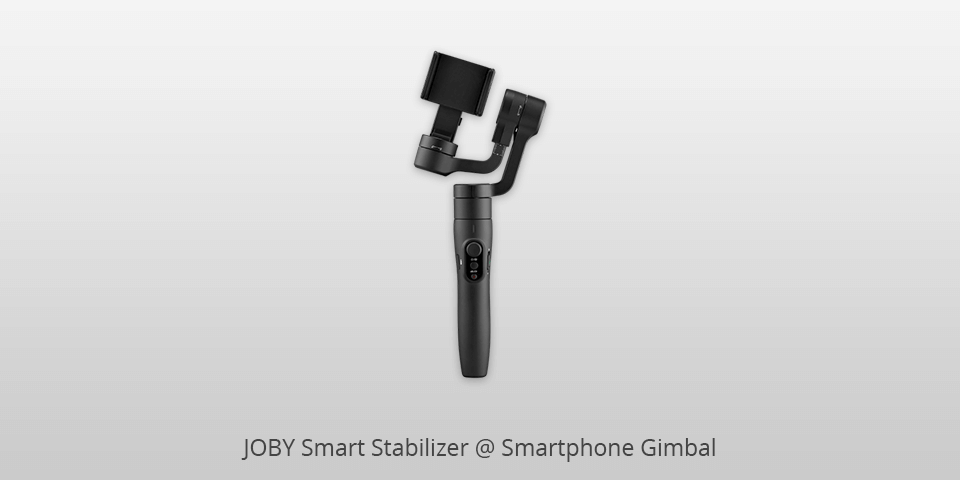
Dimensions: 4.37 x 4.65 x 12.72" | Weight: 0.94 pounds | Stabilization: 2-Axis | Max. Payload: 0.94 pounds
Foremost, one of the great things about the JOBY Smart Stabilizer is that it can be easily calibrated using the accompanying app. This is super handy if your phone isn't level when recording videos, as it can make the footage look uneven. With the app, you can ensure that your videos come out looking smooth and polished.
The JOBY Smart Stabilizer is a fantastic entry-level option, especially for those just starting out in the world of smartphone gimbals. It's lightweight, compact, and perfect for vloggers or content creators on the go. Plus, it comes with a mini iPhone tripod and a handy hard carry case, making it easy to store and transport.
But, like with any product, there are some disadvantages to consider. One main drawback is that the JOBY Smart Stabilizer doesn't fold, which can be a bit of a hassle when trying to fit it in your pocket or bag. Additionally, the battery life of the JOBY Smart Stabilizer isn't as long as some other models in the same price range.
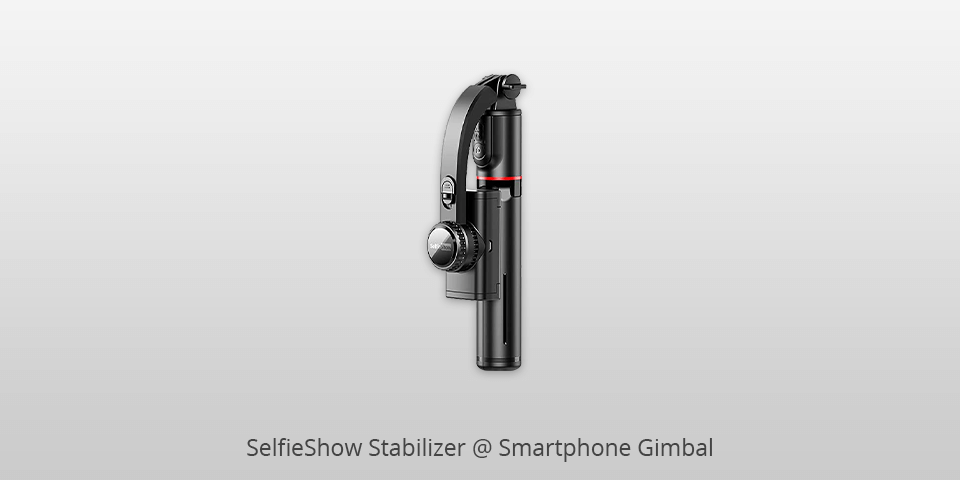
Dimensions: 2.76 x 1.57 x 7.68 " | Weight: 0.44 pounds | Stabilization: 3-Axis | Max. Payload: 1.3 pounds
SelfieShow Stabilizer is a definitely affordable option for those of you looking to stabilize your phone while shooting videos or taking selfies. It comes with a Bluetooth wireless remote control, which is super convenient because you can operate it from up to 10 meters away.
Plus, it's great for vlogging and capturing any kind of footage you want on your phone.

Now, let's touch on the main characteristics of a smartphone gimbal. It's all about minimizing camera shake and giving you the ability to easily position your camera in different directions. Most gimbals come with a cool app that allows you to control the movement of your camera and even have features like face and object tracking.
But with every gadget, there are some disadvantages too. One thing to note is that SelfieShow Stabilizer can add some weight and bulk to your smartphone. It also requires extra power and battery, which can limit their portability.
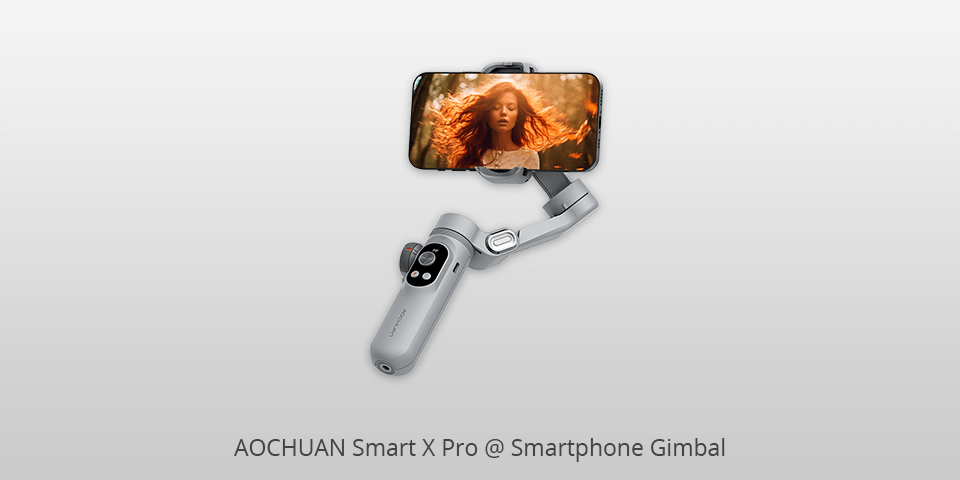
Dimensions: 10.55 x 4.92 x 2.55" | Weight: 0.65 pounds | Stabilization: 3-Axis | Max. Payload: 0.62 pounds
One of the main advantages of the Smart X Pro is its incredible stabilization technology. It has a 3-axis stabilization system and a powerful brushless motor that ensures your videos are smooth and steady, even if you're on the move. This is perfect for vloggers like me who are constantly on the go and need to capture those perfect shots.
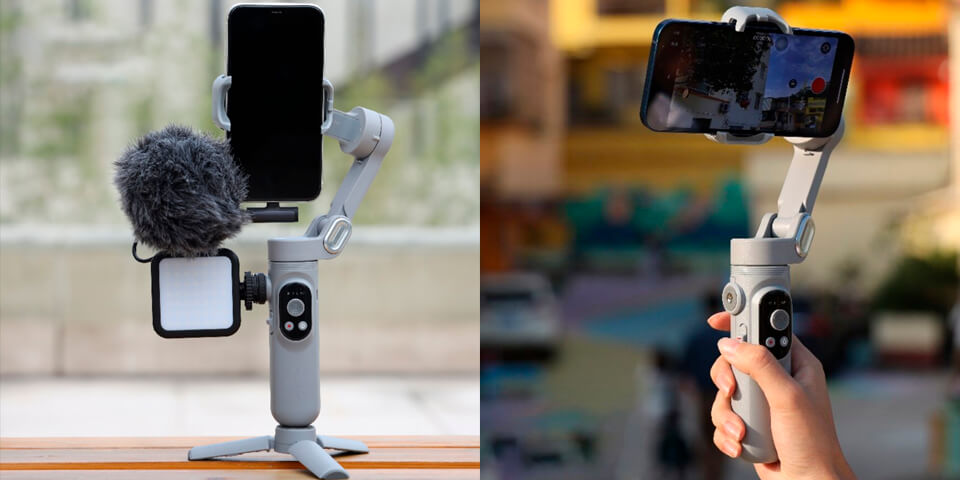
Another great feature is the face/object tracking. This gimbal can track your subject's movements, allowing you to get the best shot every time. It also has gesture control, which means you can control the camera with simple hand motions.
Now, let's talk about some disadvantages or problems I've encountered while using this camera phone gimbal. One thing I noticed is that this model can be a bit bulky and may not fit easily into smaller bags. So, if you're someone who likes to travel light, this might not be the best option for you.
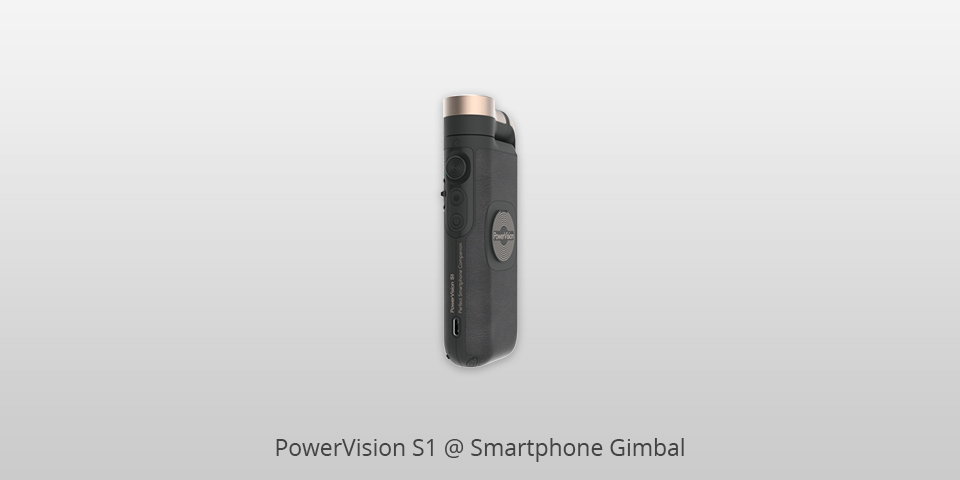
Dimensions: 5.59 x 2.28 x 1.1" | Weight: 0.65 pounds | Stabilization: 3-Axis | Max. Payload: 0.65 pounds
The design of the PowerVision S1 is compact and unassuming, which means you won't be drawing too much attention when using it in public. It's also packed with functionality that sets it apart from other larger gimbals for DSLRs.
One feature I really love is the Face & Object Tracking, which allows the gimbal to follow you or any subject you choose during livestreaming.

The gimbal has built-in motors that compensate for any movement you make while recording, giving you incredibly stable shots. You can use it with both the front and back cameras, and it even supports hands-free operation through simple gestures or a dedicated app.
However, there are a few drawbacks to consider. Firstly, the magnetic case that attaches the phone to the gimbal is sold separately, which means an additional cost. Also, the S1 is currently only compatible with specific smartphones, so you need to make sure your phone is supported before purchasing.
| IMAGE | NAME | FEATURES | |
|---|---|---|---|

|
DJI Osmo Mobile 6
OUR CHOICE
|
CHECK PRICE → | |

|
Insta360 Flow
RELIABLE
|
CHECK PRICE → | |

|
Zhiyun Smooth 4
FOR TIME LAPSE
|
CHECK PRICE → |
Remember these important specs and characteristics when choosing your first smartphone gimbal. Axis stabilization, weight, compatibility, battery life, and user-friendliness are key factors to consider. Now go out there and capture those stunning videos like a pro!
Axis stabilization. A key task of the gimbal is to keep the camera stable. Two main gimbal types are found –with two or three axes. Two-axis gimbals are responsible for the Tilt and Roll.
Three-axis models make your Pan more stable. If you plan to shoot moving subjects, then you should opt for three-axis stabilizers. At the same time, two-axis gimbals are cheaper.
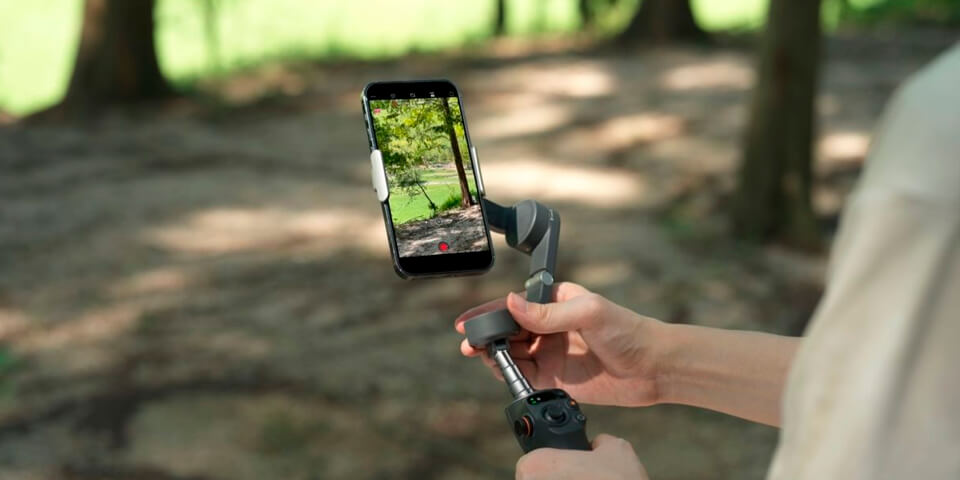
Weight. The weight of the cell phone gimbal can be critical if you plan to shoot for a long time. On average, these stabilizers weigh a few pounds. However, even one or two extra pounds can be a problem. Choose the most lightweight travel tripods but be attentive to other characteristics.
Compatibility. Before buying the option, you like, make sure that it is compatible with your device. You should also remember that some manufacturers create stabilizers for specific models of phones or cameras.
Battery life. Battery type and life are also important for the best stabilizer for smartphone. You can buy a model with replaceable alkaline batteries. Another option is stabilizers with lithium-ion batteries. You can recharge them, but the battery capacity is lower here.
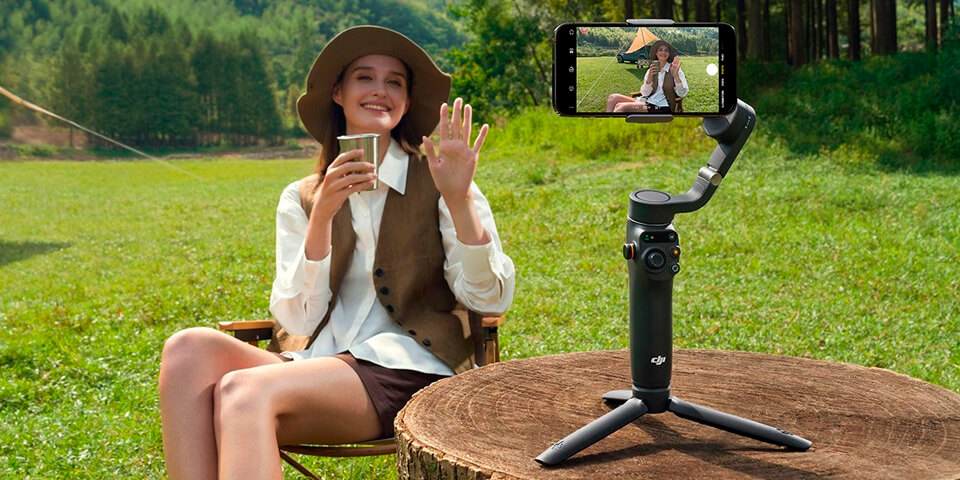
User-friendliness. As a beginner, you might not want to deal with complicated settings and controls. Look for a camera phone gimbal that's easy to use. It may not have top-notch stabilization, but it's affordable and perfect for casual use.